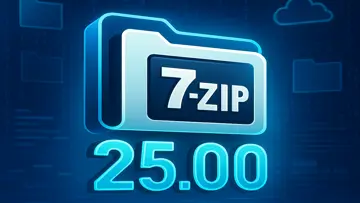2.2.0 Safe to install
Negative Harmony is an app crafted to enhance the comprehension and visualization of the musical theory of negative harmony. The application offers:
- Selection of all Western scales and modes
- Over 10 different chord types
- Sound examples for each chord (positive and negative)
- Diatonic note detection/Indicator for notes/chords outside of the scale
- Easy-to-understand UI design
The app provides a clear and intuitive approach to grasp the notes within the chosen scale/mode and their relative negative harmony. It also visually represents this relationship within the circle of fifths, with the blue axis illustrating the connection between each note.
The Negative Harmony app comprises two main sections: Scales and Chords.
The "Scales" page allows users to select a scale or mode and then tap on a key within the circle of fifths to unveil the chosen combination. This feature displays all notes within the scale/mode alongside their negative harmony counterparts, highlights the chosen key, and illustrates the axis (the blue line dividing the circle of fifths into two segments) to depict the underlying musical theory and negative harmony concept visually.
The second page, "Chords," becomes accessible once a key and scale are selected on the first page. Users can then choose from various chord types (major, minor, suspended, augmented, etc.) and select a note from the chosen scale/mode. The screen will showcase the selected chord’s name, its constituent notes, as well as the negative harmony chord name with its corresponding notes. Chord notes displayed in red signify non-diatonic elements (notes or chords not native to the key).
Overview
Negative Harmony - Simplified is a Freeware software in the category Audio & Multimedia developed by Dario Dumlijan.
The latest version of Negative Harmony - Simplified is 2.2.0, released on 05/03/2025. It was initially added to our database on 04/04/2024.
Negative Harmony - Simplified runs on the following operating systems: iOS.
Users of Negative Harmony - Simplified gave it a rating of 5 out of 5 stars.
Pros
- Unique approach to music theory that introduces a fresh perspective on harmony.
- Simplifies the complex concept of negative harmony, making it more accessible to musicians and composers.
- Offers practical applications in composition and improvisation, allowing musicians to experiment with new harmonic ideas.
- Well-structured content that guides users through the principles step by step.
- Includes examples and exercises to help reinforce learning and application of concepts.
Cons
- Concept of negative harmony may be difficult for some musicians to grasp without prior knowledge of traditional harmony.
- Limited focus on other areas of music theory, which may not suit those looking for a comprehensive theory book.
- The application of negative harmony in real-world contexts may vary, possibly leading to inconsistent results for some users.
- Not all musicians may find the approach useful for their genre or style, limiting its applicability.
FAQ
What is Negative Harmony?
Negative Harmony is a concept and technique in music theory that involves transforming traditional harmony by flipping intervals around a central point.
Who is Dario Dumlijan?
Dario Dumlijan is a musician and educator known for simplifying the concept of Negative Harmony for musicians of all levels.
How can Negative Harmony be applied in music?
Negative Harmony can be applied in music composition, improvisation, and reharmonization to create new and unique harmonic progressions.
Is Negative Harmony suitable for all genres of music?
While Negative Harmony can be applied across various genres, it is commonly associated with jazz and contemporary music styles.
Is knowledge of traditional music theory required to understand Negative Harmony?
Having a basic understanding of music theory can be helpful, but Dario Dumlijan's simplified approach makes Negative Harmony accessible to musicians with varying levels of theoretical knowledge.
Are there any specific tools or software recommended for exploring Negative Harmony?
There are software applications and online tools available that can assist in exploring Negative Harmony, but the concept can also be understood without specialized tools.
Can Negative Harmony be used to create dissonant or unsettling sounds in music?
Negative Harmony can be used to create tension and add a unique color to musical compositions, including the potential for dissonant or unexpected harmonic progressions.
What are some common misconceptions about Negative Harmony?
One common misconception is that Negative Harmony simply involves inverting chords, whereas it actually involves a more complex transformation of harmonic relationships.
How can musicians incorporate Negative Harmony into their practice routines?
Musicians can incorporate Negative Harmony by experimenting with chord progressions, analyzing existing songs through the lens of Negative Harmony, and applying its principles to their own compositions.
Related
Chordial - Chord Dictionary
The Chordial library is a comprehensive resource for guitar, ukulele, banjo, and mandolin players. Access thousands of chord diagrams with ease using Chordial's unique and user-friendly interface.Chords Finder
ChordFinder efficiently identifies all possible chords from the user-inputted notes. The addition of the Chord Quiz feature enhances the learning process, facilitating the mastery of music theory.JSongSheet: Guitar Song Sheets
JSongSheet caters to a variety of users including casual music enthusiasts seeking sheets for play and sing-a-longs, novice to intermediate learners of guitar, ukulele, bass, and piano, as well as professional gigging musicians.LongPlayer
Eternal Soundscapes: Discover LongPlayer by Andrew Wilsmoonmoons AR
"moonmoons AR" represents a noteworthy collaboration between composer Anna Meredith and designer Arthur Carabott, merging music with innovative technology through the use of Augmented Reality and Spatial Audio.Musicate
Musicate yourself and enhance your musical abilities! Boost your skills by dedicating daily practice to ear training, sight reading, and music theory exercises.Latest Reviews
|
|
Art
Unlock Your Creativity with Art by Fogware Publishing |
|
|
8-Bit Armies
Nostalgic Strategy Reimagined in 8-Bit Armies |
|
|
boxes
Innovative Design Tool for Efficient Organization |
|
|
eduVPN Client
Secure and Easy Access to Educational Networks with eduVPN Client |
|
|
o2 Cloud
Seamless Cloud Solutions with o2 Cloud by O2-De |
|
Gorn
Brutal Gladiatorial Combat in VR Delivers an Unforgettable Experience |
|
|
UpdateStar Premium Edition
Keeping Your Software Updated Has Never Been Easier with UpdateStar Premium Edition! |
|
|
Microsoft Edge
A New Standard in Web Browsing |
|
|
Google Chrome
Fast and Versatile Web Browser |
|
|
Microsoft Visual C++ 2015 Redistributable Package
Boost your system performance with Microsoft Visual C++ 2015 Redistributable Package! |
|
|
Microsoft Visual C++ 2010 Redistributable
Essential Component for Running Visual C++ Applications |
|
|
Microsoft OneDrive
Streamline Your File Management with Microsoft OneDrive |









